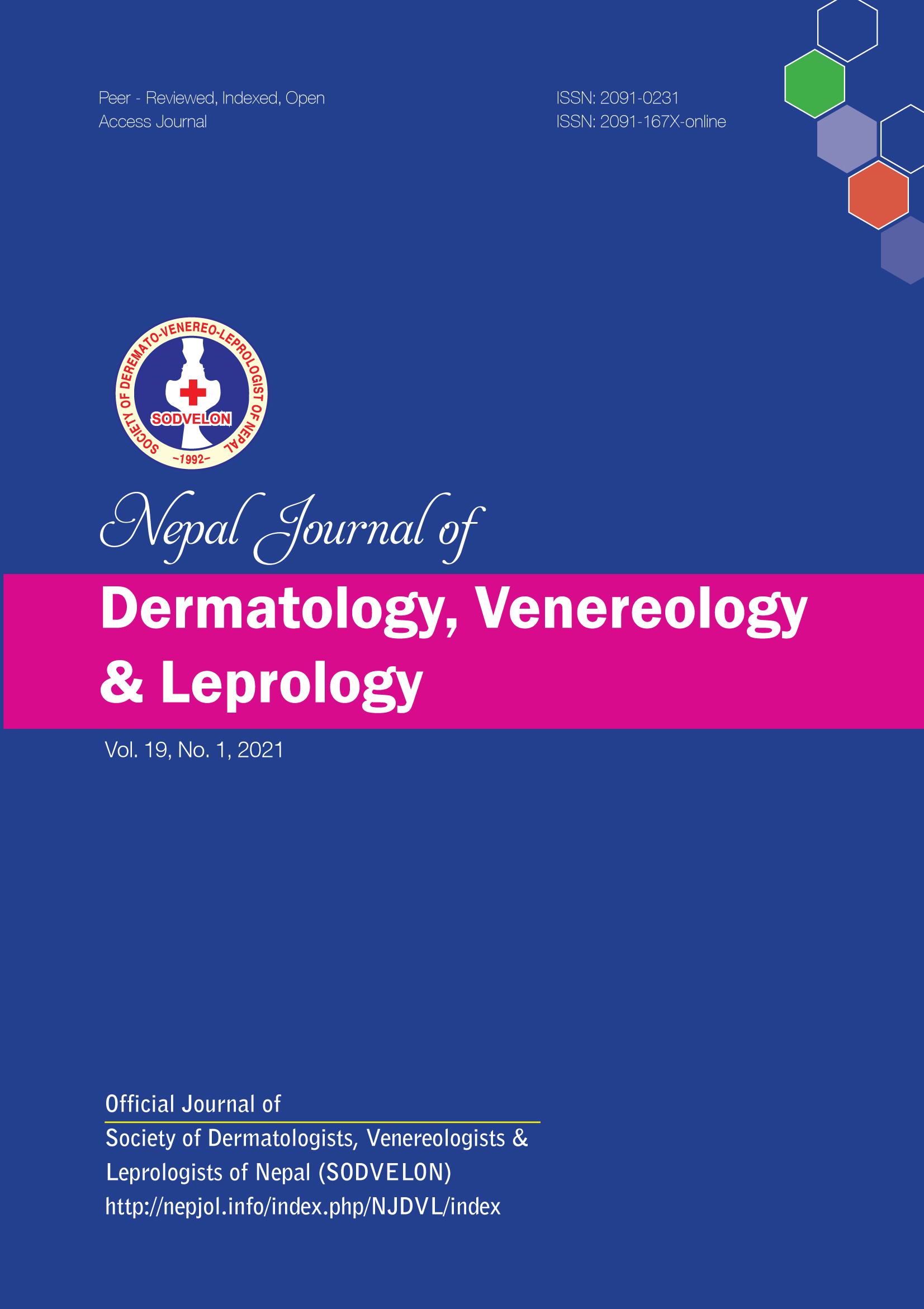An Observational Study to Evaluate Quality of Life in Patients with Melasma in A Tertiary Level Hospital of Pokhara
DOI:
https://doi.org/10.3126/njdvl.v19i1.35047Keywords:
Melanosis, Quality of Life, Severity of Illness Index, Ultraviolet RaysAbstract
Introduction: Melasma is an acquired hyper melanosis that becomes more pronounced after sun exposure. Centro facial which is the commonest pattern followed by Malar and Mandibular are three clinical patterns of Melasma. Genetic influences, exposure to UV radiation, pregnancy, hormonal therapies, contribute to the pathogenesis of melasma. Melasma may considerably have significant effect on quality of life of patients.
Objectives: The present study was conducted to evaluate the effects of melasma in quality of life (QoL) in the form of DLQI (Dermatology Life Quality Index) and severity of melasma according to Melasma Area and Severity Index (MASI).
Materials and Methods: This is a hospital based cross-sectional prospective study conducted in 193 Melasma patients in the Department of Dermatology, Venereology and Leprology, Gandaki Medical College and Teaching Hospital, Pokhara from November 2018 to November 2019. MASI score was calculated and the patients were provided with a Nepali version of DLQI to fill up.
Results: This study included 193 patients. Mean age of patients with melasma was 29.4 ± 8.5 years with maximum reported age of 59 years. The Mean age of onset of disease was 26.5 years. The Mean age of onset of disease had little impact on DLQI. The mean DLQI score was 10.9 ± 5.9, thus indicating “very large effect on patient’s life”. The mean MASI score was 6.6 ± 5.2. It was found that there was no correlation between severity of disease and DLQI scores (p=0.317)
Conclusion: Melasma commonly affected females during second and third decades of life. It had a very large effect on patient’s life as assessed by DLQI.
Downloads
Downloads
Published
How to Cite
Issue
Section
License
Copyright on any research article is transferred in full to Nepal Journal of Dermatology, Venereology & Leprology upon publication. The copyright transfer includes the right to reproduce and distribute the article in any form of reproduction (printing, electronic media or any other form).




